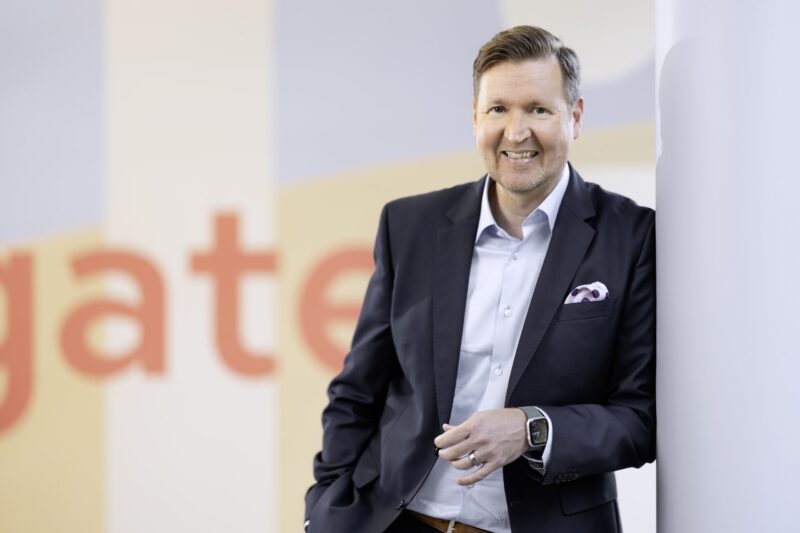Four cornerstones of a successful ERP renewal project
You have surely read articles about managers who have been fired because of failed ERP projects. On the other hand, you probably also know of examples where the operations of a company have jeopardised because the management has not been proactive and innovative enough. It is then no wonder that both operational development and ERP overhauls are important matters for nearly every company.
A successful ERP project can be a significant merit to a manager, and it can have a far-reaching impact on his or her career. So, what should every business manager understand about ERP projects to make them successful? There is a lot of information available in the market, but so far a guide for business management on system and process renewals that support core functions is yet to be discovered.
Therefore, it is high time to turn the spotlight on ERP renewal from a business management’s perspective.
The following four cornerstones according to our experience determine the success of the renewal:
- The business must have ownership of the renewal
- Companies should rely on a leading, cloud-based business platform
- The renewal should be split into motivating and easily directed sprints
- Full benefits are realised through continuous development
Want to know more? Download the full guide
1. The business must have ownership of the renewal
When business core systems such as ERP are renewed, the importance of business support is often talked about. Sure, support from the business side is good – but taking ownership of the project is better.
A company’s business management must be the designer and planner of the renewal of its own functions. It is the management that has a deep knowledge of their business and can identify why the ERP renewal is necessary and what it aims to achieve. When the business management is directing the renewal projects, the focus stays on solving the right, key issues. Too often, the design and description of the renewal is outsourced to external ERP consultants whose presentations and vocabulary the business management has a hard time following.
The understanding of the management as the reform project progresses becomes especially important when the time comes to make quick decisions about core competencies and future processes. In these situations, external consultants are an excellent support, but the responsibility always lies with the business management itself.
In order to own and lead the renewal, the business management must ensure that the methods in use are visual and understandable. Such methods are also helpful when communicating about the renewal and engaging key stakeholders to the project.
2. Companies should rely on a leading, cloud-based business platform
When a company is renewing its ERP or its core system, it should rely on a leading, cloud-based business platform. There are plenty of options: Oracle NetSuite, SAP’s cloud solutions or Microsoft Dynamics for example.
These global tech giants are spending billions on research and development. Therefore, the functionalities of these business platforms are constantly evolving and they are always using the latest technologies, whether these be in information security or the application of artificial intelligence. Business platforms include a comprehensive range of functionalities and are easily customisable and scalable with additional parts produced by the platform-related ecosystem.
The basic implementation of the business platform is fast. It is a pre-integrated solution based on the use of standard processes that are suitable for the majority, instead of the traditional heavy customisation. The global solution adapts to the specific needs of each country and is used regardless of place or time.
The world’s leading cloud-based business platforms are growing much faster than the market and becoming more common, especially in ERP renewal projects for medium-sized and large enterprises. The selection process should therefore not be made too complicated and detailed. Each of the major business platforms cover most of the required functions.
Choose the platform that best suits your business and focus resources on the successful implementation and management of the project.
3. The renewal should be divided into motivating and easily directed business sprints
The renewal should be divided into business sprints where each agreed functionality is completed. This way you stay motivated when your sprints produce results.
The business sprint covers a larger entity than just the technical implementation. That is why sprints and their costs should not be designed based solely on technical aspects. The possible changes in the processes and roles of employees should also be taken into consideration.
A business sprint is led by the business manager, who has the power and ability to make decisions during the sprint. An example of a business sprint could be designing and developing essential elements for order-to-cash process, setting up a necessary functionality for finance, or developing advanced features for professional services. The aim for business sprints is to reduce the total time required for the entire renewal project by continuously monitoring the progress and making the directing easier.
4. Full benefits are realised through continuous development.
The renewal of the core business will only really start once the solution is available to the users. Therefore, the first version of the solution to support the renewal should be brought into production as soon as possible.
The first version should only include the most essential business capabilities and processes that bring the company the highest business value. The first production version is often referred to as Minimum Viable Design or Minimum Viable Product. As the name implies, thisq contains only the most essential parts.
Focus on customising your business platform with functionality that is relevant and adds value to your business. Otherwise, you should mainly use the standard platform processes and functionalities.
After the first production version, development becomes an ongoing process, focusing on the most important issues on the development list that have appeared in production use. The features of the business platforms are also continuously developing, so there are regularly new functionalities on the to-do list.
Companies should adopt a culture and model of continuous development: this way you get all the added value and increasing return on investment with future versions of the business platform.
Choose the right partner
In addition to the four cornerstones, the responsible manager must make a decision that will significantly affect the success of the renewal – the choice of a strategic partner.
When choosing a partner, pay special attention to the following:
- Does the partner have the capabilities for management consulting, business renewal and technical implementation of the chosen business platform?
- Can the partner help create a model of continuous improvement?
- Does the partner provide a service that can flexibly execute necessary changes in the future?
This paper is part of a series for business leaders in which we present four important cornerstones of ERP renewal. You have just read our opening story. Other parts can be found here:
- Cornerstone 1: Businesses must own the renewal project
- Cornerstone 2: Utilise a world-class business platform
- Cornerstone 3: Divide the renewal project into motivating and easy-to-manage sprints
- Cornerstone 4: Continuous development guarantees the full benefit of the investment
Interested in hearing more about this topic? Read more here!
About the author
Eero Noroviita is responsible for Sofigate’s business unit, which specializes in accelerating the development and renewal of medium-sized and growing companies through cloud-based business solutions. Eero’s long experience as a CEO among other things has reinforced his view of the role of management in business technology renewal projects.



